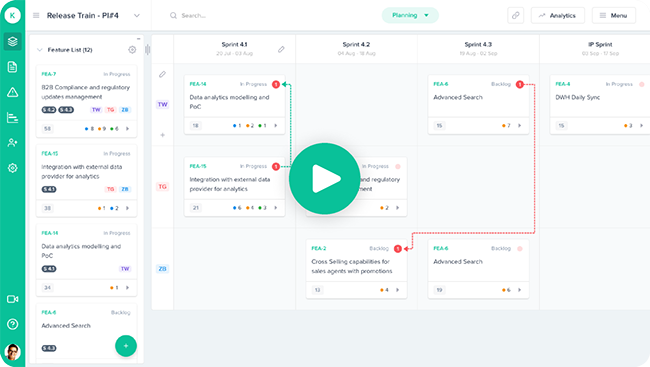The Product Owner plays a very critical role in enhancing and improving the overall agility of the agile team in the Scaled Agile Framework. They work closely with the product management, customers and stakeholders to understand what they really want. With the requirements in hand, a product owner has to incorporate and communicate these features to the agile team and then ensure that these features are being built the way they should be.
A Product Owner plays an instrumental role during the PI Planning. In this article we will explore the seven characteristics that define the role of a Product Owner during PI Planning.
1. Refining the Team Backlog
A product owner is the owner of the team backlog and the ultimate content authority. Their frequent interactions with the customers and business owners gives them the edge of possessing the right knowledge of exactly what is needed.
Refining the backlog is one of the most essential traits that define the role of a Product Owner. This is an ongoing process that consists of the following activities.
- Availability of Features: During the PI Planning, it is extremely important to have all the features updated to the latest requirements and they should be available before PI Planning.
- Prioritization: Sequencing the items in the team backlog is crucial. It gives you an idea of which features need to be addressed first, thus which features need to have more effort put in.
- Estimation: Each feature needs to have story points allocated. Estimation allows the product owner to gain insight into determining the level of effort that a feature needs. This helps in assessing the priority and the actual value of each feature.
- Definition: A product owner has to ensure that each feature is complete with all the requirements and maintains technical integrity. They have to ensure that each feature is compliant with the Definition of Done.
2. Planning the Iterations
An iteration is where the development is done within a set start and end date. This is where the agile team finds items from the Team Backlog and commits to delivering them incrementally. The product owner along with the scrum master, sets the dates for each iteration. As for the items from the Team Backlog, the product owner discusses the priority and conveys the importance of the items that need to be developed. They are always present to provide any guidance or to answer any queries raised against these the requirements of the items.
3. Determining PI Objectives
PI objectives are a set of directives that are summarized to describe the technical and business elements of a goal that needs to be achieved by an agile team or an agile release train. They serve the basis of planning and aligning the outcomes of a program increment.
The product owner works with the agile team in giving any guidance and sense of direction on attaining the PI Objectives.
4. Contributes to Roadmap and Vision
The roadmap is the schedule of the achievable milestones that the agile team sets to do. The Program vision provides a much broader context to what needs to be developed. For both these important artifacts, any changes made in these updates need to be immediately available for the agile team.
By collaborating with the product management, the product owner has to review and update the content of the roadmap and the vision constantly.
5. Participates in Inspect and Adapt
Inspect and Adapt is an efficient way of guaranteeing continuous improvement. A Product Owner ensures that maximum output is obtained from this session.
The product owner works with other product owners of the other agile teams to identify any impediments and to implement any improvement that would guide the teams towards developing better products.
6. Ensures Seamless Communication and Collaboration
Ensuring seamless collaboration and communication is one of the fundamental tasks of a product owner.
By doing so, they work with product owners of other teams and the product management and discuss inter team dependencies, impediments and risks.
7. Can Act as a Customer Proxy
In the absence of the customer, the product owner may fill in for them. Due to their relationship with the customer, a product owner is well aware of the customer demands and pain points. By being a proxy they are able to voice any of their concerns that could be highly beneficial for other team members of the agile team.
About Kendis
Kendis is a leading solution for Distributed PI Planning. It is a new way to plan and manage your dependencies, risks, and objectives. Get actionable insights into your program increment’s progress and scope changes.
Try out 10 days free trial or book a demo with our product expert.
Kendis is a digital solution for PI, Tribe, and Big room Planning that works on top of Jira and Azure Boards.










